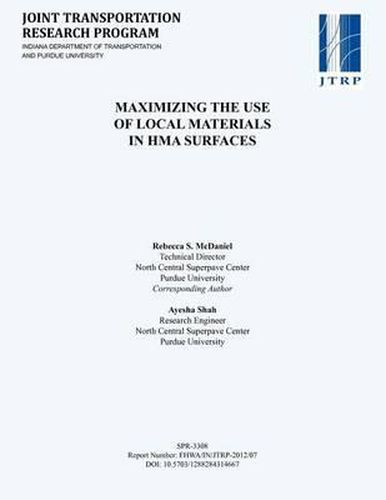One approach to reducing initial construction costs is to maximize the use of locally available aggregates. The main concern with using locally available carbonate aggregates, however, is that they tend to polish under traffic and provide inadequate friction. INDOT specifications for asphalt surface mixes, especially for high volume traffic, require high friction aggregates like steel slag, blast furnace slag or sandstone, which are more resistant to polishing. These premium aggregates are not readily available in all parts of the state, requiring long haul distances from limited sources in Indiana or out of state. The study summarized here was conducted to investigate the feasibility of using greater quantities of local, less polish resistant aggregates, specifically limestones, in asphalt surfaces when blended with high friction aggregates. Samples of blends of various quantities of polish-susceptible aggregates with high friction aggregates were prepared, polished to simulate the action of traffic, and tested in the laboratory for their frictional properties. The variables considered include mix type (HMA and SMA), coarse aggregate type (two polish-susceptible aggregates blended with steel furnace slag, blast furnace slag and sandstone), polish-susceptible aggregate content, and amount of limestone fine aggregate (in HMA). The results of this study demonstrate that local, polish susceptible aggregates can be used to replace the high quality friction aggregates in HMA and SMA surface mixtures without detrimental effect on friction. In addition, the laboratory evaluation procedures used in this study could be implemented as a screening test for new materials or new types of mixtures. Such a screening test would allow contractors, material suppliers and INDOT to ascertain whether a material warrants further investigation before the effort and funds are invested in construction of a field trial.
Read More





